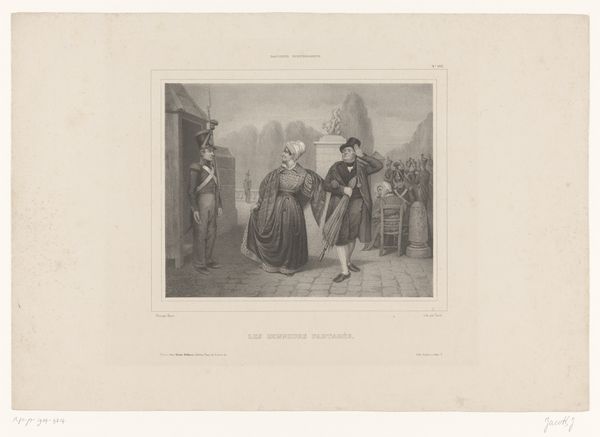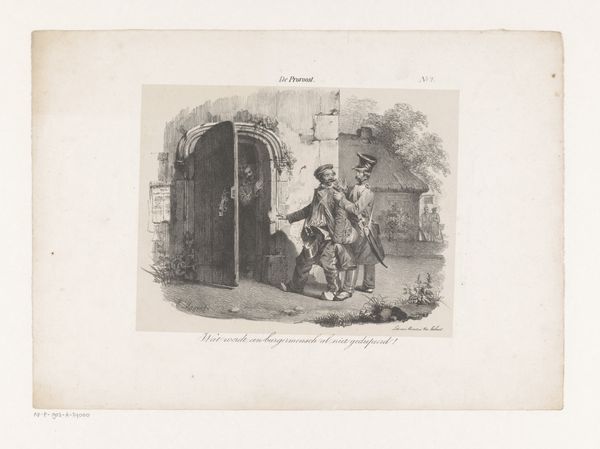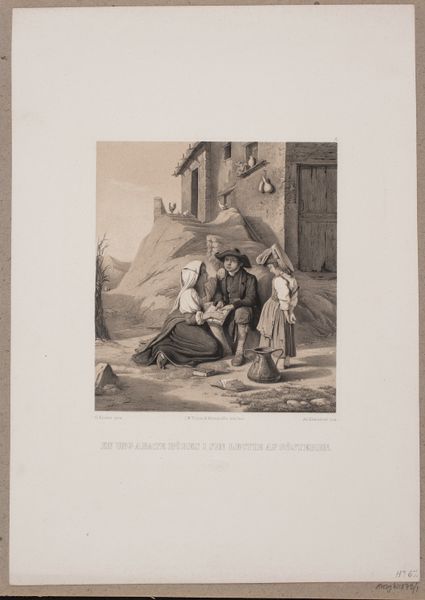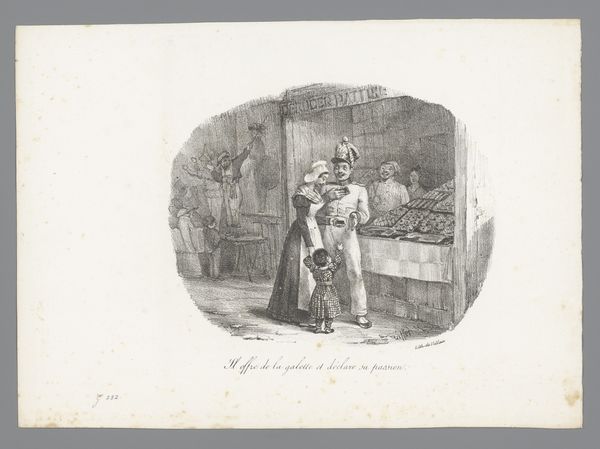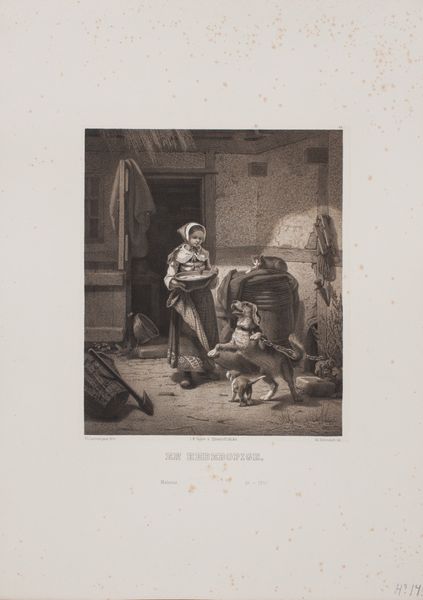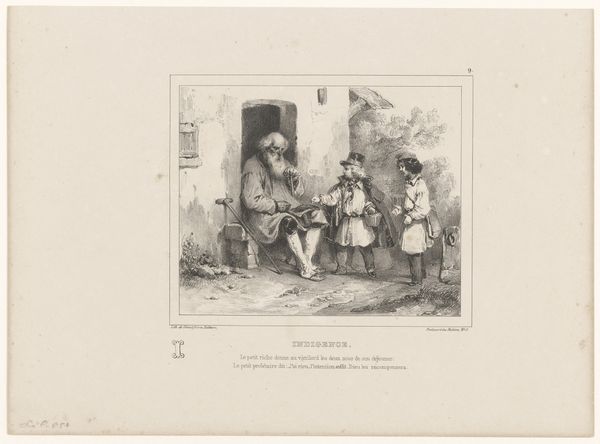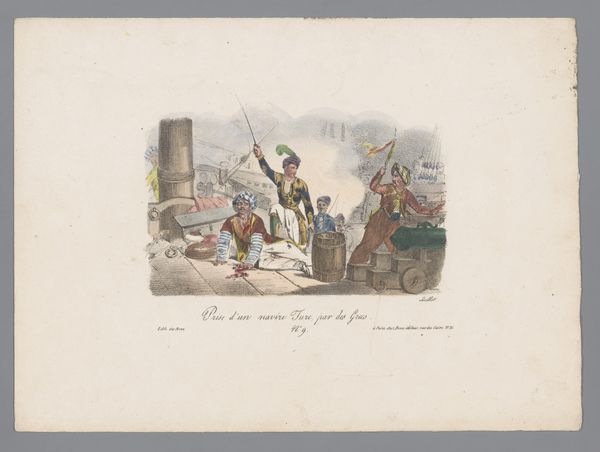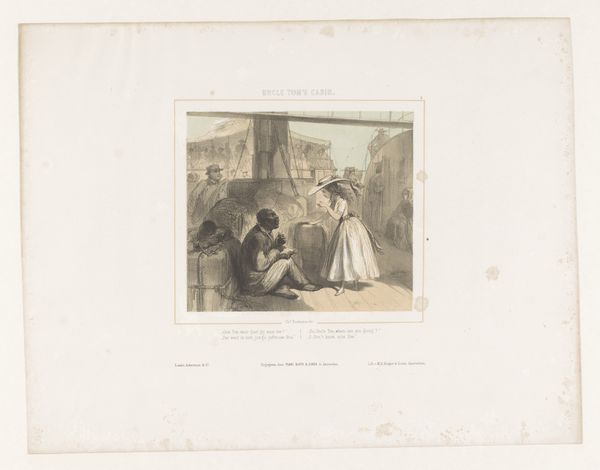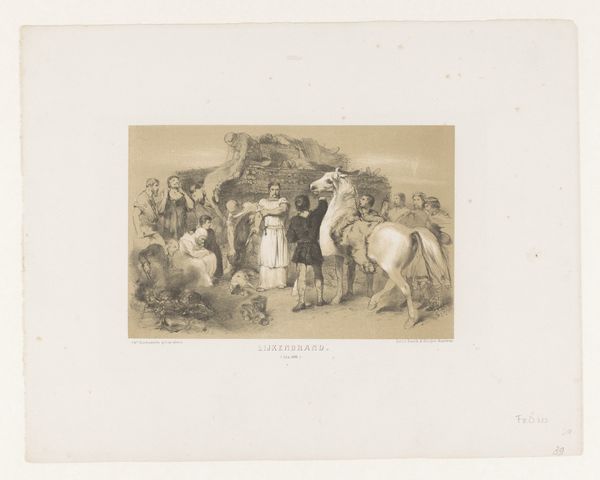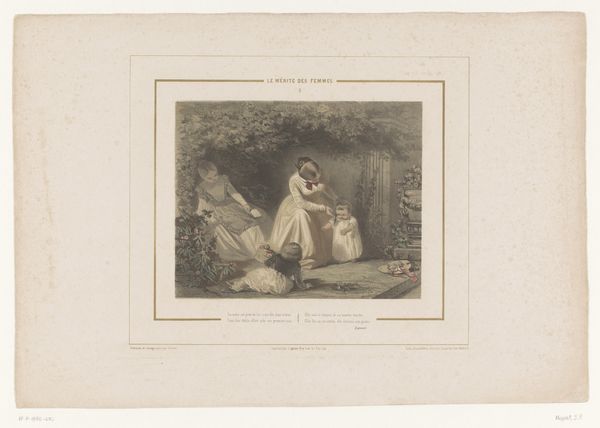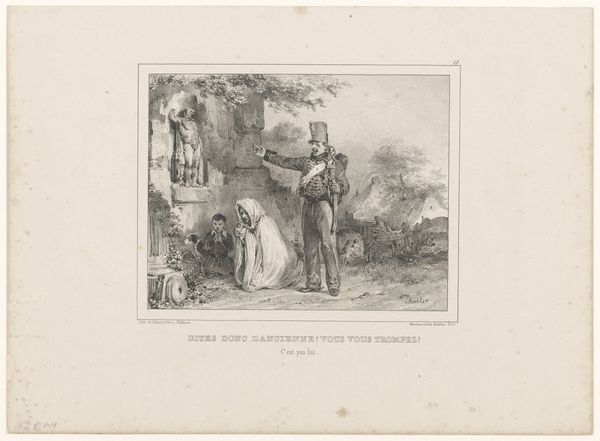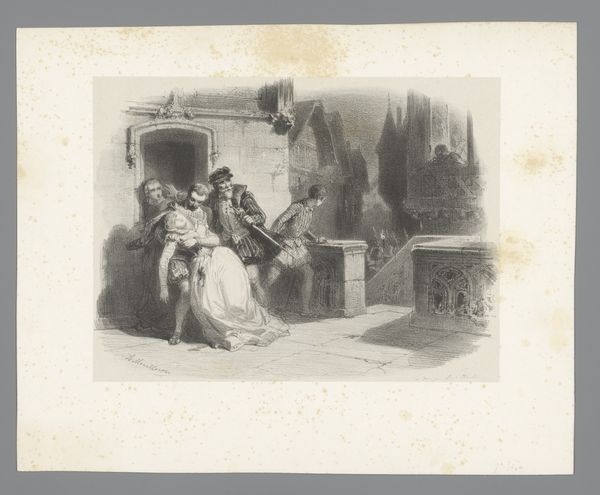
Dimensions: height 251 mm, width 325 mm
Copyright: Rijks Museum: Open Domain
Curator: This watercolour illustration by Hélène Feillet, made after 1853, is titled "Family in Basque Costumes." It is fascinating to view these depictions of Basque identity during this era, capturing social norms and customs through dress and setting. Editor: Immediately, what strikes me is the interplay of light and shadow; it gives the scene a rather tranquil, almost idyllic quality, don't you think? Curator: Yes, and it invites an inquiry into how Romanticism sought to idealize rural and regional life. Note how the family's attire functions, asserting a cultural narrative distinct from centralized national identities. The image itself becomes a statement of Basque cultural pride, a visual resistance. Editor: Observe how Feillet guides our eye. The arrangement, with the man standing to one side and the woman and children grouped together, creates a dynamic balance. I'm particularly interested in the artist’s handling of the textures: the rough stone, soft fabric—how does that contribute to the work's overall aesthetic impact? Curator: I see it speaking to the romanticised depictions of rural life. It hints at a life harmonious with nature but might obscure economic realities. Consider the power dynamics inherent in depicting regional cultures for a dominant, often urban, audience. Who gets to tell these stories? Editor: I agree that Feillet captures a specific kind of rural idealism. But also look at the vertical lines of the architecture contrasting the curved, almost gentle, rendering of the family themselves, or even just how her skillful application of colour creates visual interest. It’s about form meeting…life. Curator: The artist seems to navigate representing “Basqueness” during a period of political transformation. Exploring gender roles—how women maintain cultural continuity versus the outward-facing role of men—adds complexity. What are the limits and possibilities within her depictions? Editor: It certainly encourages me to examine closely the subtleties within Feillet's technique, inviting contemplation about our ideas around nation, region, and the human experience. Curator: Precisely, this artwork acts as a launchpad into thinking more about regionalism, identity politics, and representation during the 19th century.
Comments
No comments
Be the first to comment and join the conversation on the ultimate creative platform.
